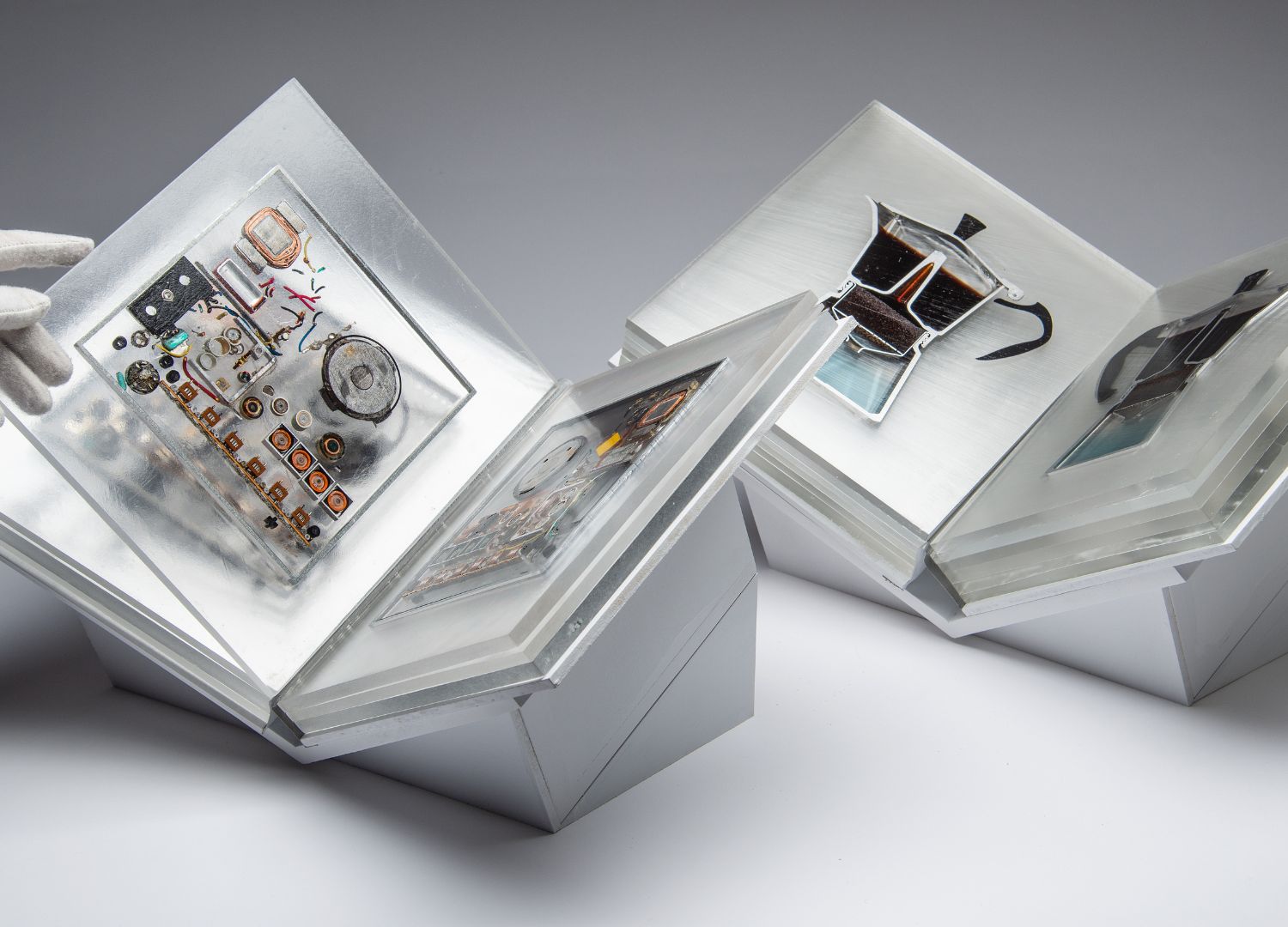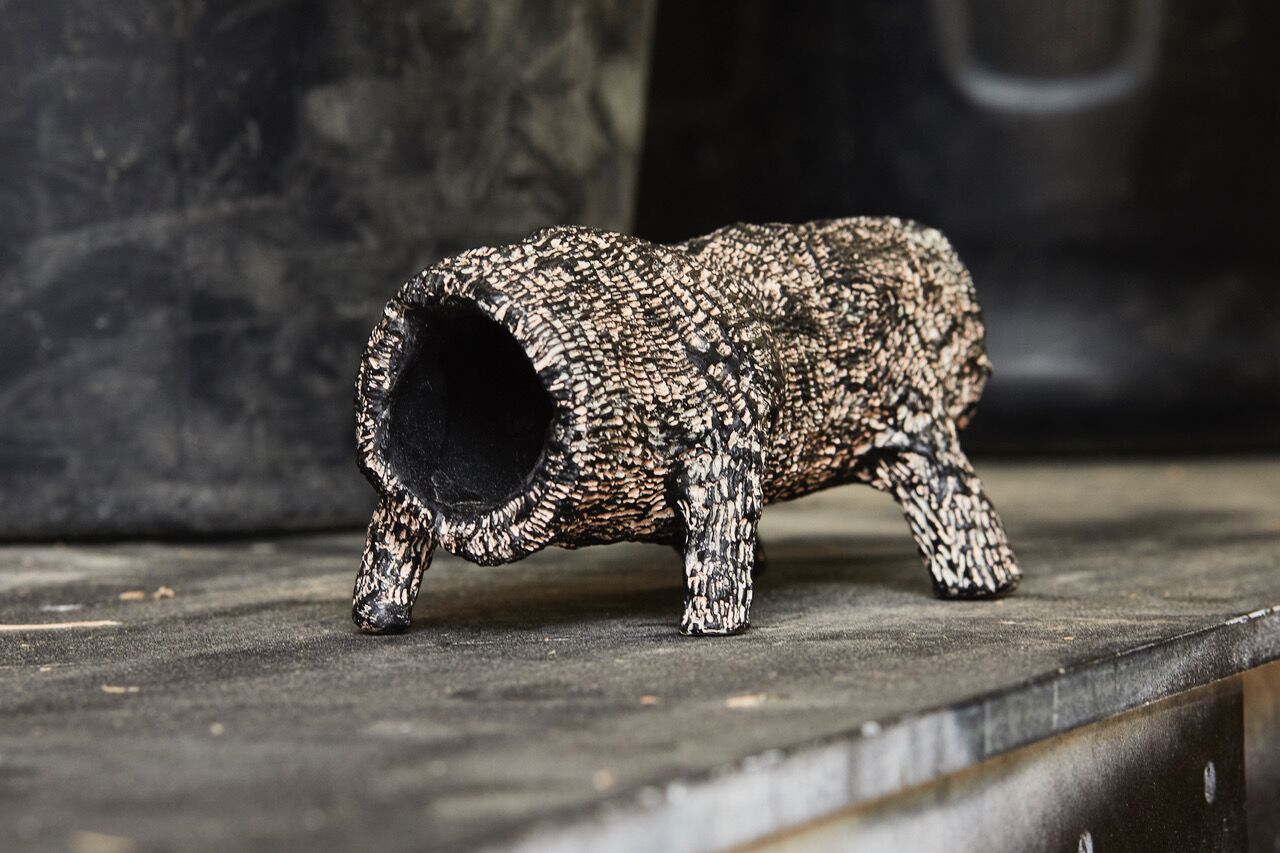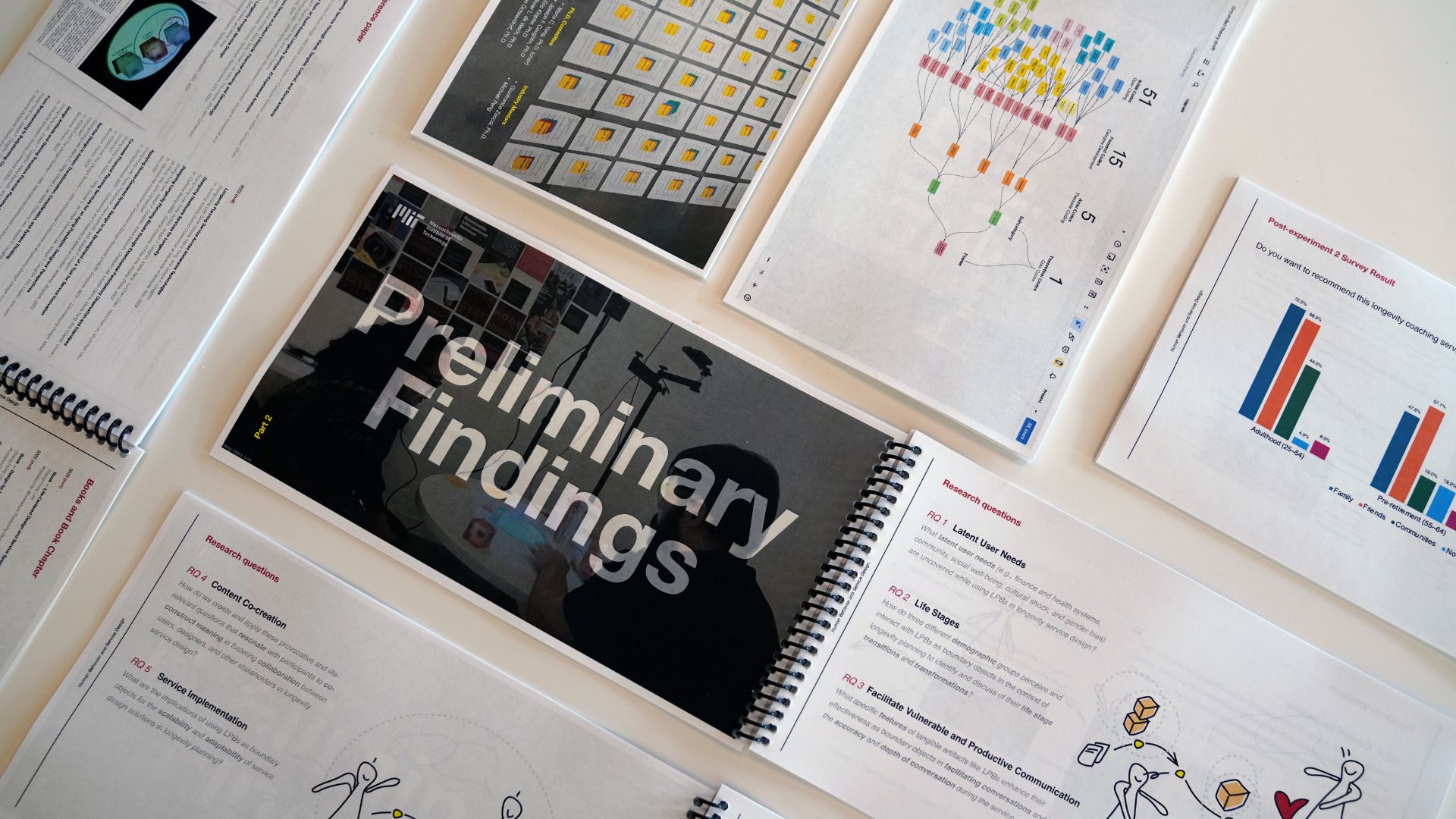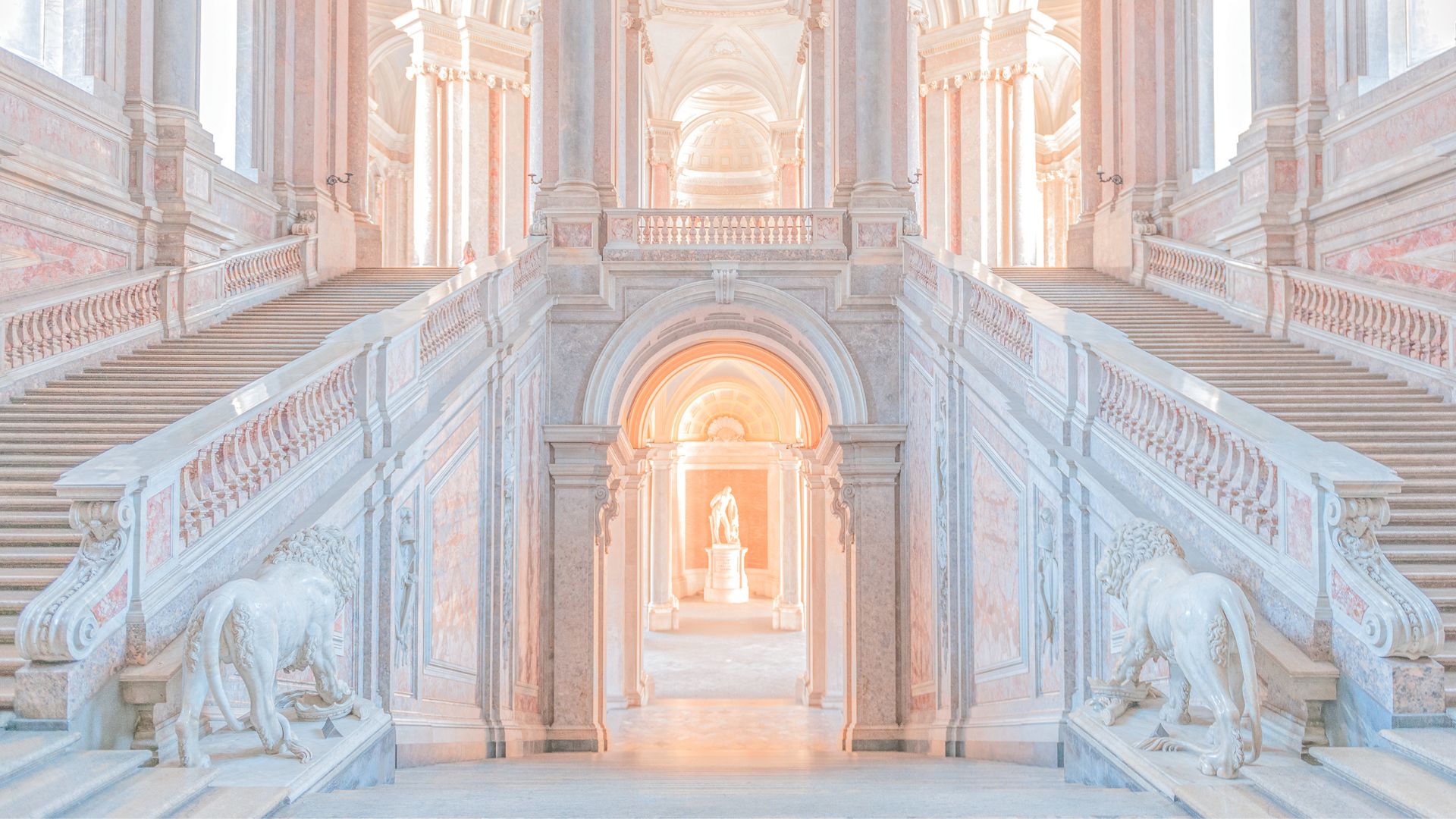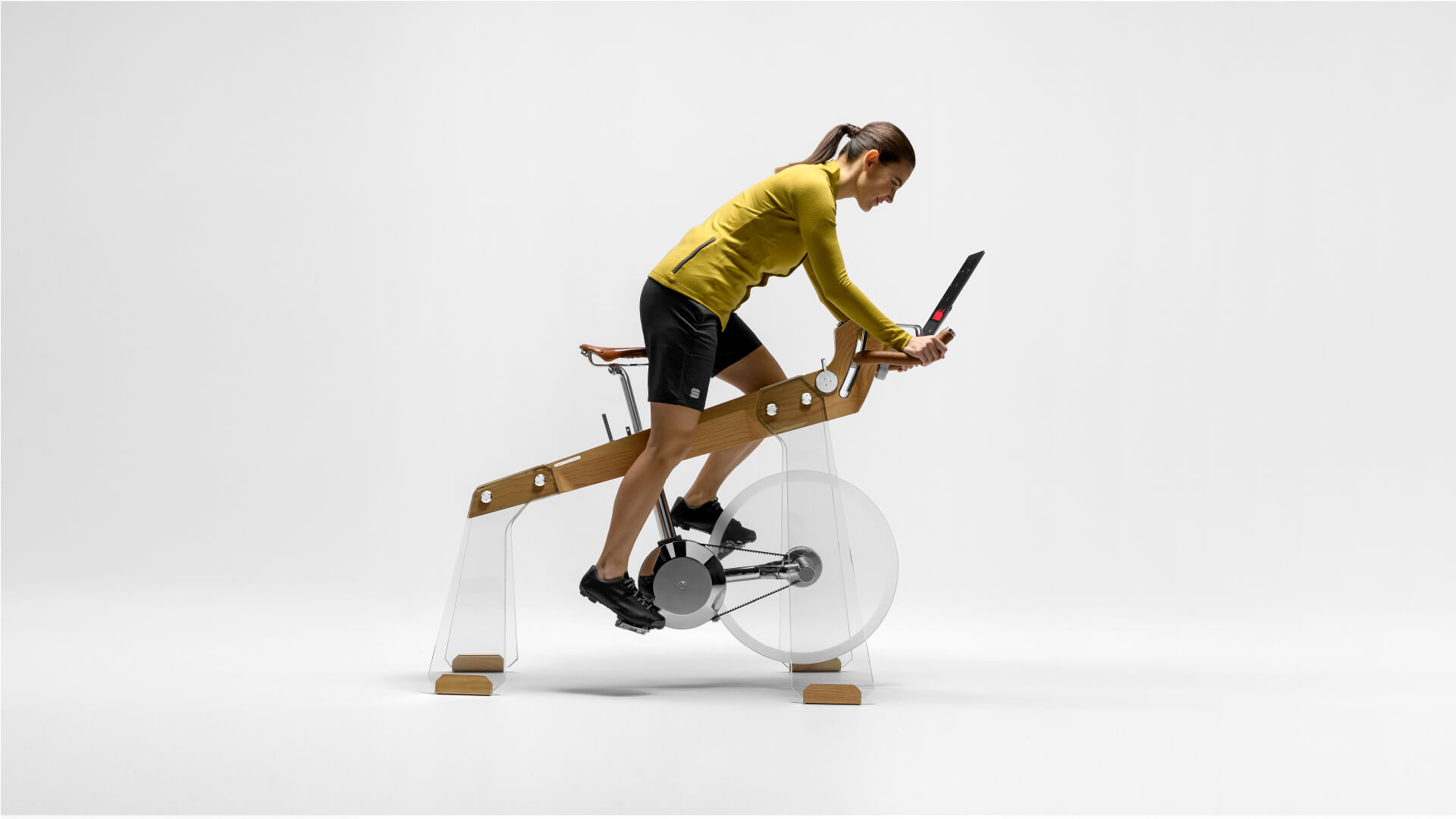5 Innovative sculptures that experiment with our perception of reality
Come explore the boundaries between time, space and reality with Fabian Oefner
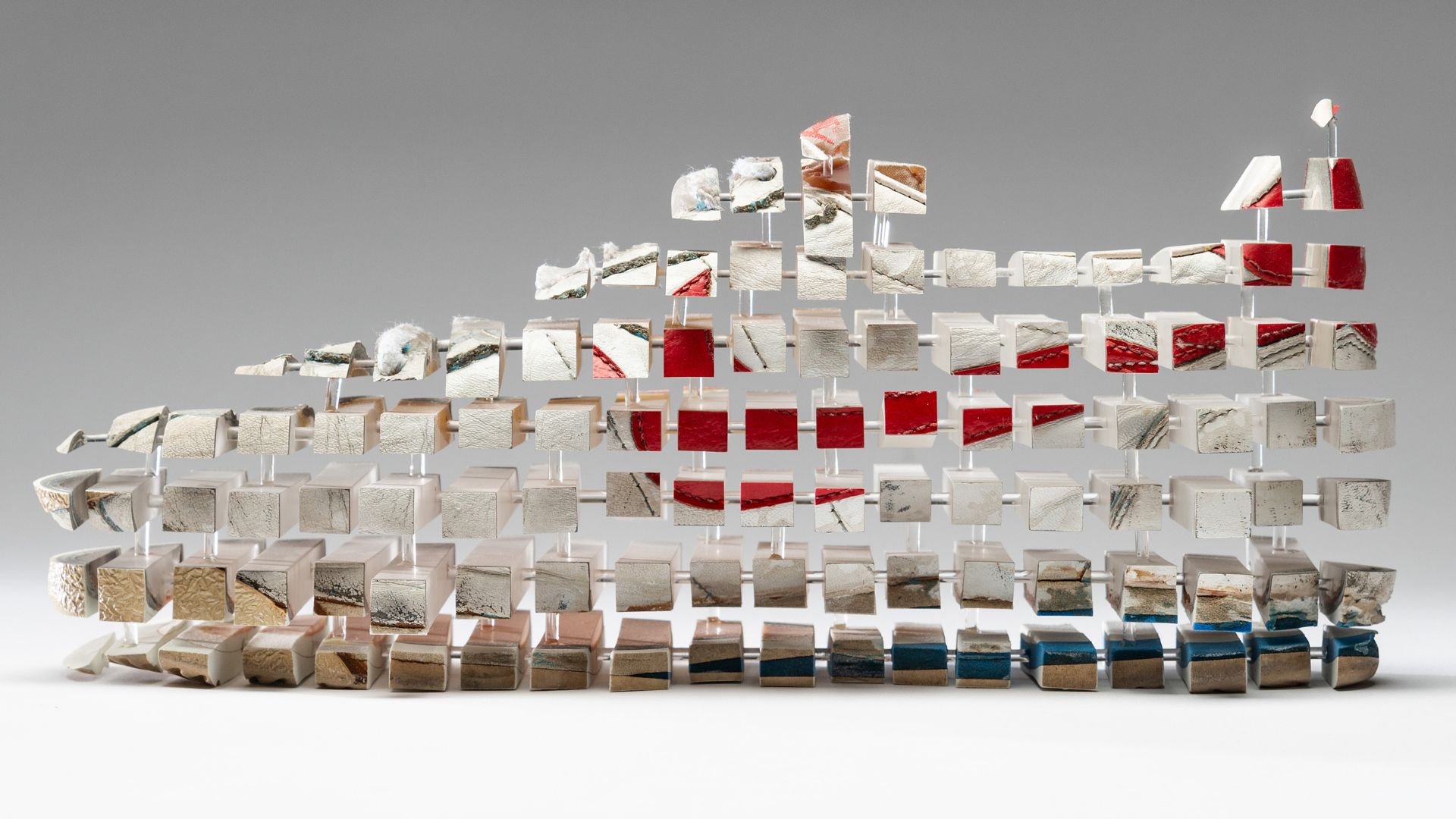
With a riveting approach to art that is highly methodical but playful for unexpected moments to happen – Swiss artist Fabian Oefner brilliantly creates carefully orchestrated work in photography, sculpture and film as well as pieces utilizing a loose framework for art to happen.
Currently based in New York – he’s best known for his photographs of hyper-realistic moments of cars disintegrating and sliced up objects from computers to cameras and shoes embedded in resin.
“I found Studio Oefner 10 years ago as a multidisciplinary space to harmoniously bring art and science together.
My studio is very much like a science lab where on any given day, you see us working on creating indoor tornados to study the motion of air, cutting through a Leica camera on an archaic band saw or disassembling a real Lamborghini Aventador to craft one of the Disintegrating photographs.
It really is a big playground to experiment in! It’s ultimately my photographic work that inspires the sculptures – the objects I fabricate are frozen in time as opposed to moments frozen in time in photography” says Oefner.
A pièce de résistance in every right, scroll further to know more about his extraordinary work that’s a part of several public and private collections across the globe today.
1. Block Chains
Block Chains is a fascinating series about the geometric disassembly & reassembly of iconic design objects from Rollei Cameras to the Nike Jordan One sneaker or Campbell Soups.
Whether it’s reassembling camera cubes in a different order, connecting shoe layers to open up like a book or turning soup into an origami object – these sculptures are meant to be played with and what fascinates Oefner is the interaction between the viewer and the object.

But how does a familiar object that is spatially distorted change our perception of reality?
The inspiration for the series stems from looking at digitally altered images and it takes the idea of half-realities in pictures and applies them to the third dimension.
The objects are still rooted in reality, yet behave in a way that challenges our common experience with them.
It’s that duality between familiarity and strangeness for Oefner!

2. CutUp
CutUp is an eclectic series of technical objects that are skillfully sliced, rearranged and distorted into a new form.
These pieces are then encapsulated in resin – captured in their current state forever.
Rather than seeing destruction as something negative, Oefner uses this process to break objects and images down into smaller pieces and reassembles them into new compositions – enhanced in both meaning and function from the original pieces.

The production process of this series is a seamless unique mix of high-end and low-end technologies – it starts with a very sophisticated method, which involves vacuum and pressure chambers to cure the resin around the embedded object at a precise atmospheric pressure and temperature.
In contrast to this, for slicing the objects apart, he utilizes an old archaic band saw that cuts through the object’s different materials with brute force.
After this, the individual object slices are further meticulously polished by hand, reassembled into their new shape and embedded in resin to form the final shape of the sculpture.

3. Fragments
Fragments is a sculpture series beautifully embodying eight communication devices encapsulated in resin.
The title of this series refers to the fragmentation of the objects but is also a term in linguistics where a ‘fragment’ refers to an incomplete sentence that can be interpreted in a mèlange of ways!
Oefner carefully cuts the devices into small pieces and removes most of the object before embedding the remaining pieces into resin.
The fragments are then arranged in their original position within the object, so that the overall shape of the device remains intact.

At first glance the sculptures are just a random composition of abstract shapes, textures and color.
However, as one starts to move around the resin block, the meaning of the fragments start to reveal themselves to the viewer.
He picked these eight objects since they represent communication throughout the centuries and it includes technological milestones of different eras.
From a 19th century letterpress that has its origins in the famous printing press developed by Gutenberg to the model 500 telephone designed by the Bell Telephone company in Boston on to the most current communication device, a MacBook Pro designed by Apple.
Additionally, the devices chosen not only effortlessly represent important developments in the way we communicate today but also endless forms of communication!

4. The Heisenberg Series
The Heisenberg Series draws its inspiration from the world of quantum mechanics where the sculptures are based on Werner Heisenberg`s famous Uncertainty Principle.
This theory states that one can’t measure two separate parameters of a particle simultaneously and one can either determine one parameter and ignore the other or vice versa, but can never know both at once!
Oefner took this idea from the world of physics and created an artistic equivalent of it.
These one-of-a-kind sculptures are made of six different everyday objects – shoes, a clock, a tape recorder, a camera and a black box.

He filled these with resin, carefully sliced them into hundreds of individual parts and then rearranged the slices into a distorted new version of the object, that lets one see its inner workings.
Through this transformation, the objects have a peculiar effect on their observer – when one looks at them from a distance, they can easily identify the object.
However, if one gets closer to observe the inside, the shape of the object starts to get distorted and vanishes completely!

5. Spatial Books
The stunning Spatial Books series features The Bialetti Book amongst others – a collection of iconic objects turned into books.
For the Bialetti Book – a moka pot was filled with actual coffee, embedded in resin, sliced into 12 individual pages and then bound into a book.
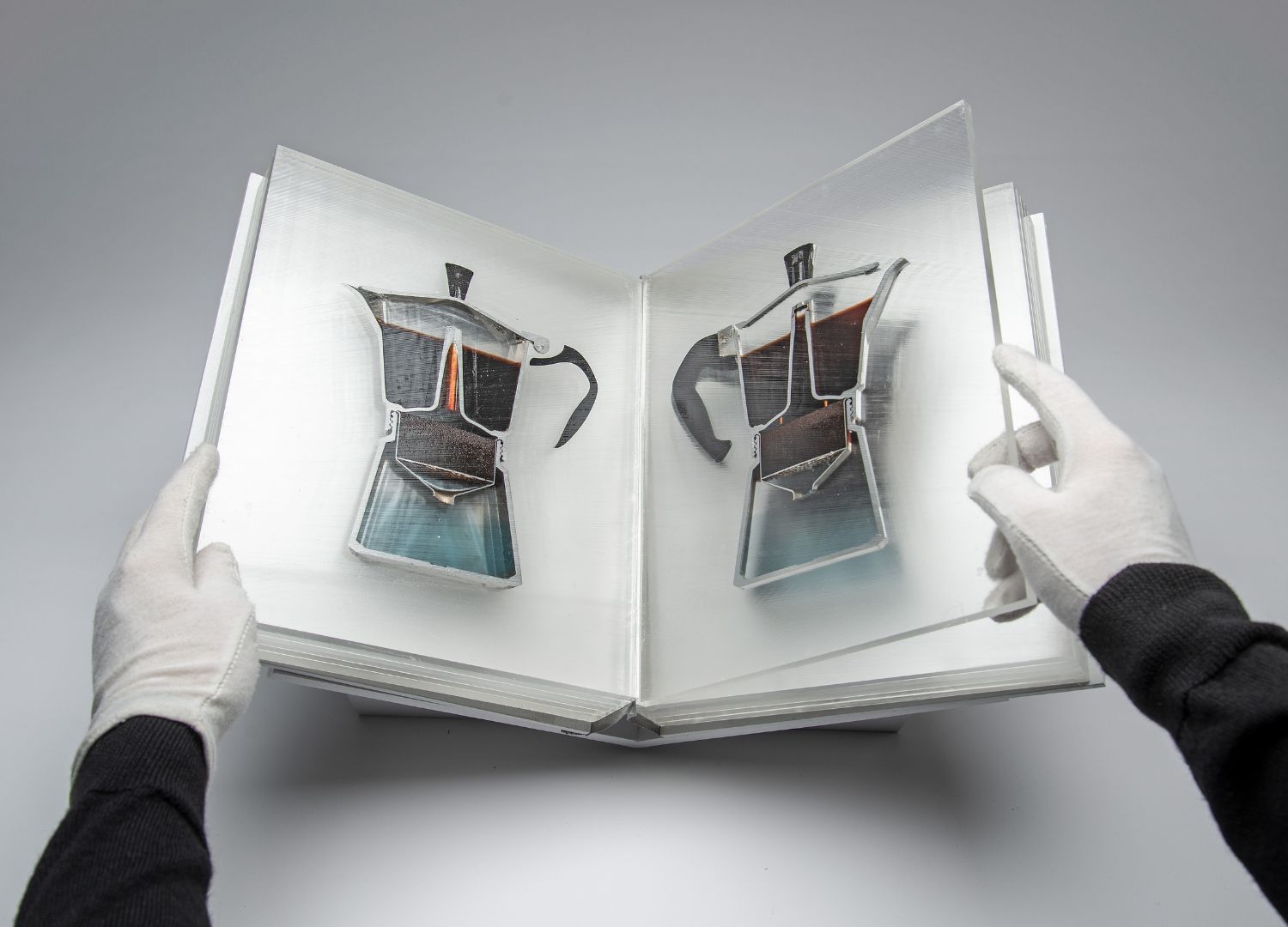
Usually a book contains images, which are an abstraction of reality into a two dimensional space.
In Spatial Books, Oefner bypasses the abstraction and turns reality directly into a two dimensional space.
As one goes on to browse through the pages – they get a completely different outlook on these familiar objects and the result is an intensified sense of space, dimensions, materiality and time!
